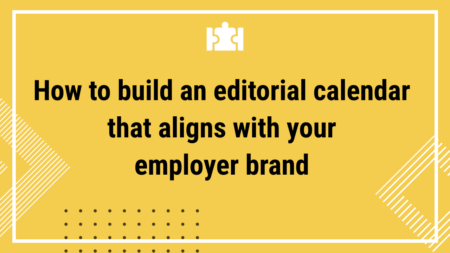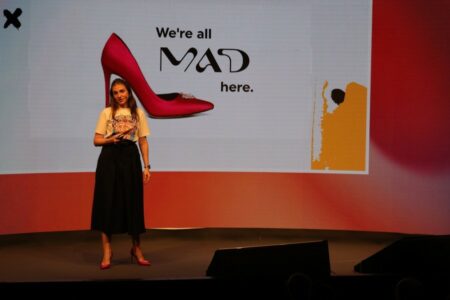Business leaders came up with the idea of “office culture” back in the 80s, in an attempt to treat employees more like human beings and less like machines completing daily tasks. Step by step, organizations started noticing that people stayed longer when treated well. Productivity skyrocketed because office culture gave employees a feeling of belonging, and hiring people for culture fit became the norm in the years to come.
Companies in various industries started favoring candidates who matched their values, aka their DNA. Fast forward to the present day, company culture in employer brand management has become rather confusing when associated with the word “fit”.
To some degree, culture-fit can be misleading because it goes against diversity and inclusion. In many cases, it’s the unconscious bias getting in the way. Because we are human, it’s natural to want to surround ourselves with people who are like us. In a business environment, this mindset can backfire as it prevents leaders from exploring new options.

Company culture “add” to replace company culture “fit”?
In an attempt to make “fit” a little less stereotypical from a company culture perspective, the notion of “add” approaches things a little differently in employer brand management. In simple terms, it answers the question: “what can a new employee bring in the company to ADD and strengthen the company culture and enable it to thrive?
Company leaders should start the transition by becoming more open to engaging candidates from various backgrounds. Rather than remain focused on matching new employees with current employees, HR and digital employer branding professionals may want to look at the unique interests, values, and communication styles of candidates who don’t fit the bill. Just because they don’t fit, it doesn’t mean they’re not worth hiring.
Needless to say, it can be uncomfortable to make the transition. To smoothen the process, take things step by step.
Make small changes in the employee branding strategy & hiring process
- Consider hiring “weird” people and you might find brilliance. Actively scout candidates who perceive the world differently. If you’re the HR manager, try to remain objective and recognize your predisposition to only like people who make you feel comfortable.
- Get more creative with your recruitment process and don’t limit your “hunt” to recruiting websites, job fairs, and LinkedIn. Concert halls can be a valuable hunting ground!
- Get out of the recruitment comfort zone and look beyond necessity. Different educational backgrounds can provide incredibly transferable skills. Sure, hard skills matter but did you know that some of the best software developers out there come from design schools?
At a first glance, culture add brings a different perspective to the existing company culture. And that’s because the ideas are unknown, out of the box, new, and even a little peculiar. However, those peculiarities may be just what your company needs to grow and foster diversity and inclusion.

Aspirational company culture vs. real company culture
Companies today are like people in their 20s on the dating scene. They highlight aspirational values. Values that don’t exist, values they wish would exist. “Many companies haven’t really figured out who they are. They don’t have a clear perspective of what they want, what their goals are. The first impulse is to present themselves in a good light. Just like with dating, they seek to bring out characteristics that make them “attractive”; characteristics that are not necessarily true.” (Magor Csibi, Head of Leadership and Organizational Culture Practice at Trend Consult Group
One of the greatest mistakes companies do these days is to create unrealistic company values. Many go to PR agencies for help because they want to be Google, or Facebook, or any other tech giant. It’s okay to get inspired by the best, but it’s wrong to promote values that are not your own.
The bigger the gap between aspirations and reality, the bigger the suffering for the people in the organization.
A lot of new kids on the block claim to be “innovative”, “disruptive”, “transparent”, and “people-centric”. In the beginning, people will believe them. But once candidates get the job and they start doing the work, they realize that the values presented were false. Little by little, the culture degrades and at some point, employees will realize it was all an illusion. When you don’t know what your values are, you don’t have a company culture. Values are sorted out internally, not by hiring PR companies to make you look like the most wanted employer on the market.
Culture is not about what we are saying about ourselves, but about what we do every day when nobody is looking. Living the values, not declaring the values makes a company culture-fit. Also, it’s not about fitting in, but about belonging.
Leadership plays a key role in company culture. Processes and policies are built to support the culture. But culture is not a segment of a company, it’s the company itself. How can leaders preserve real values? The first step is to give the right importance to the recruitment process; the second is to stick to your guns no matter how big you grow. Company growth is tricky because growth can degrade the culture. This is why having good company leaders matters so much.

Takeaway
They say “people don’t change jobs, they change managers/leaders” and that’s because creating a work environment that inspires fuels productivity. But keeping employees motivated is easier said than done. Company culture is the mix of values and beliefs that spell out your brand’s personality. If you want to get it right, the key is to stop chasing after results and pay more attention to the people inside the company. The best strategy for maximizing results is: create a healthy work environment.
For more information on employer brand management and company culture, make sure to check out the full version of our 4th meet-up at EB Tech where we discussed about culture fit as criterion in talent acquisition:
A big “Thank you” to our speakers who contributed in the making of this article:
- Iulia Costea, Tech Talent Acquisition Manager at Marley Spoon
- Magor Csibi, Head of Leadership and Organizational Culture Practice at Trend Consult Group






